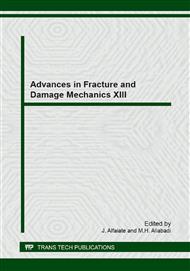p.237
p.241
p.245
p.249
p.253
p.257
p.261
p.265
p.269
High Speed Fracture Phenomena by Underwater Shockwave of Explosive Energy and Large Current Pulse in Glass Container
Abstract:
Recently, many countries are promoting the collection, the reproduction and the use of consumer goods;aluminum cans, PET bottles, and so on. On the other hand, the reproduction of the glass bottles is not so active excluding use as a returnable bottle, because the recycle cost is high. The glass bottles are fractured by the small fragment for reproduction. The small crushing fragments are called ‘Cullet’. The cullet is melted and molded again as glassware. The surface area is enlarged by making the bottle cullet, and it is possible to melt these efficiently. As a result, it becomes possible to shorten the time to melt the glass bottle and reduce a consumption of the fuel oil. The reasons with not active recycling of the glass bottle are that large-scale crushing equipment is required and it takes a lot of time and cost. This study proposed a new recycling technique for fracturing the glass bottle by using an underwater shockwave by explosive and electric pulse. The shock wave pressures produced by the explosive and the electric pulse energy were measured and the optimum crushing conditions were discussed.
Info:
Periodical:
Pages:
253-256
Citation:
Online since:
September 2014
Price:
Сopyright:
© 2015 Trans Tech Publications Ltd. All Rights Reserved
Share:
Citation:


